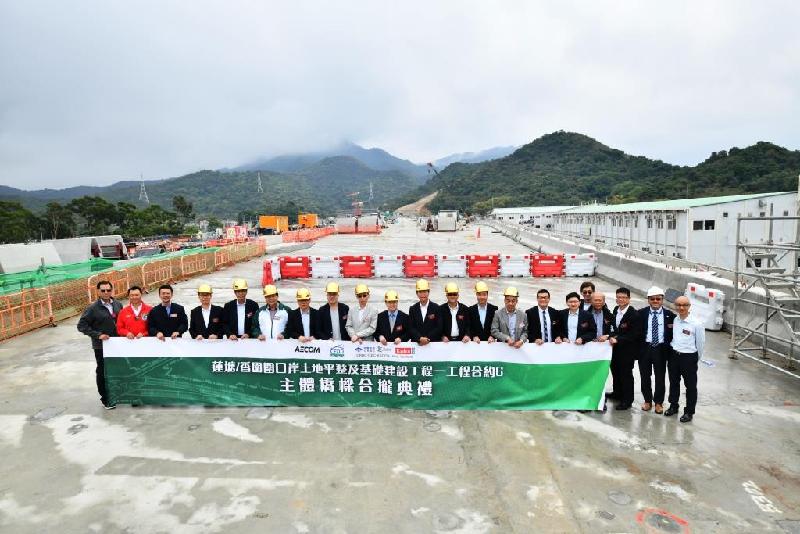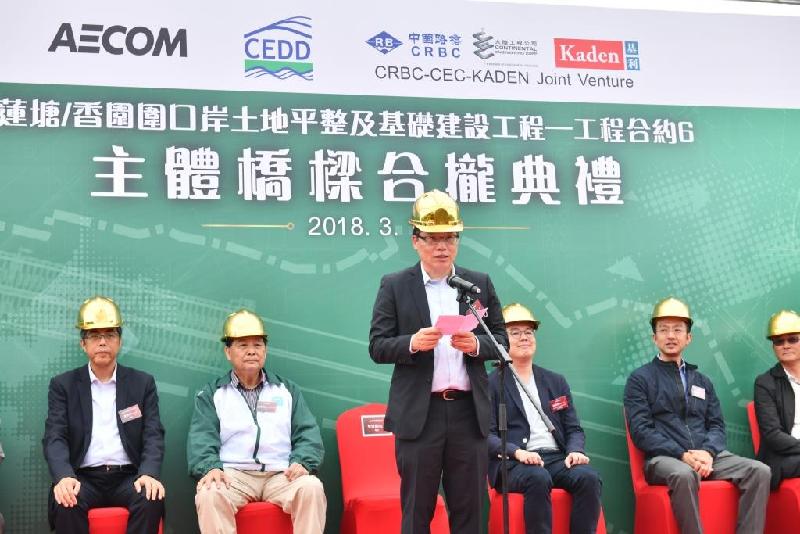Connection of viaduct completes under Liantang/Heung Yuen Wai Boundary Control Point project (with photos)
******************************************************************************************
The Liantang/Heung Yuen Wai BCP is the first land-based BCP in Hong Kong with direct access facilities for both passengers and vehicles and will serve as a cross-border link to the east of Shenzhen, providing efficient cross-border access to and from the eastern part of Shenzhen, Huizhou, eastern parts of Guangdong and neighbouring provinces. The new BCP could also further strengthen Hong Kong's position in the development of the Pearl River Delta region and at the same time alleviate the heavy usage of the existing BCPs. In addition, the newly built connecting road could improve the road network in various areas of North District including Sha Tau Kok and Ta Kwu Ling.
Attending the linking-up ceremony of the viaduct, the Director of Civil Engineering and Development, Mr Lam Sai-hung, said that despite the massive scale of the BCP project, the entire works team demonstrated full co-operation and spared no effort in achieving satisfactory works progress under this BCP project. Mr Lam pointed out that upon completion of the main structure, other works such as road paving and installation of barriers and road facilities will be carried out in phases. The Government will strive to meet the target of completing the BCP by the end of this year.
The main viaduct, running from Sha Tau Kok Road to Lin Ma Hang Road, is 3.3 kilometres in length. It connects the Liantang/Heung Yuen Wai BCP in the north and the Lung Shan Tunnel as well as the Fanling Highway Interchange in the south. Comprising four sections, the viaduct was assembled from 2 864 gigantic precast segments which ranged from about 2.5 metres to 2.9m in length and were 17m in width and 2.5m in height. Each precast segment weighed about 40 to 77 tonnes, equivalent to the weight of two to four double-decker buses. Most parts of the viaduct were constructed by using crawler cranes to lift the precast segments for assembly, which could in turn greatly reduce noise impact and the extent as well as duration of road closure.
Ends/Wednesday, March 14, 2018
Issued at HKT 18:47
Issued at HKT 18:47
NNNN






